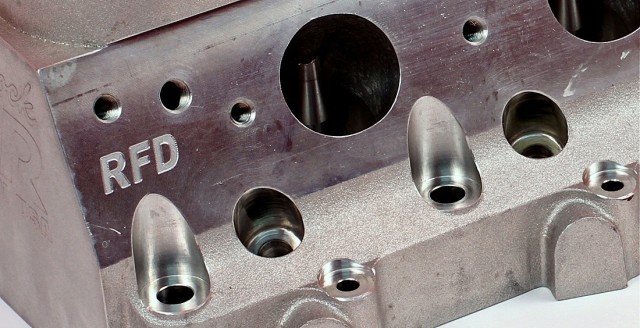 TECH5 is a regular feature where EngineLabs asks industry leaders five technical questions. This week’s guest Curtis Boggs of Race Flow Development. Boggs has been instrumental in developing cylinder heads for a wide range of racing applications, include circle track, road racing, Pro Stock and motorcycles.
TECH5 is a regular feature where EngineLabs asks industry leaders five technical questions. This week’s guest Curtis Boggs of Race Flow Development. Boggs has been instrumental in developing cylinder heads for a wide range of racing applications, include circle track, road racing, Pro Stock and motorcycles.
EngineLabs: Comparing respective intake-port volumes seems like a logical strategy for matching cylinder heads to their proper applications. Is there a catch?
Boggs: It seems simple enough; too big, the airspeed slows, and you have a lazy engine. Too small, you hurt power and the engine won’t rpm properly. For most applications, that’s true. But moving into more specialized engine combinations or high-horsepower-per-cubic-inch, induction systems are more sensitive and this doesn’t work.
EngineLabs: So, what’s the key?
Boggs: Lets discuss cylinder design on its own for a moment. There are several ways to design intake ports, and they all have their use or application. A port that is very large at the opening and tapers down to the valve has an application. But so do ports with the opposite design. And, of course, there are hundreds of variations in between. Some port designers like very large valve bowls. Those aren’t appropriate for everything but do have applications. These variations have a drastic effect on the engine’s “personality.” How the engine responds is application specific. You wouldn’t use a 500ci Pro Stock engine in a LeMans road-race car. Very few port designers have the experience necessary to have full command of this phase of induction design. Simple port volume based on cc’s tells you nothing about the head’s application or port “style.” The two tapered-port examples above are at opposite ends of the design spectrum, yet they both could have the same poured cc volume.
EngineLabs: Okay, applications are specific in high-end racing. But you haven’t told us how to select a cylinder head for a specific application. Why have you confused the subject?
Boggs: It’s really not so difficult. On engines of lesser demand, say 1.8-horsepower-per-cubic-inch, as an example, choosing heads by port volume can work. This is effective for most traditional head designs we know, such as, Chevy big block, 23- and 18-degree small-block. However when you move into the raised-runner custom casting and machining on high-end race builds, it’s time to trust your chosen cylinder head professional.
EngineLabs: Then what does the professional do to select the right head? There must be some formula that involves port volume or flow-bench results to support the decision — it can’t be just experience or intuition?

Airflow and port volume numbers are not the only considerations when working with high-end applications like Pro Stock.
Boggs: Typically it will depend on the level of the build. Today most moderate-level builds are using off-the-shelf-style CNC heads and can base their choices off the tried and true methods. Engine size and rpm will dictate the mass airflow demand of the shortblock. That airflow can be calculated back up the induction system to find what head flow and cross sectional area is needed. This math has been readily available and there are programs to help, like PipeMax. As long as the shortblock cfm demand is met, the velocity management is far more importent the just a flow number. The more specialised the builds become, the more difficult it is to work out the proper induction system. For more demanding style builds, most professional engine builders will consult with their chosen cylinder head professional.
EngineLabs: Finally, please reveal the applications for the port designs you used in the example earlier. That is, a port with a large opening that tapers down to the valve, and a port that is just the opposite — small opening that opens up to the valve. What specific applications would support those intake-port designs?
Boggs: The applications for port areas can be difficult to explain in general terms. In an induction system you are managing pressure differentials. You have several high-differential areas, starting with the venturi in the carburators, perhaps a large port opening in the manifold tapering smaller to a small area where it meets the head forming another venturi. Then there’s the final venturi at the valve. How you manage the relationship between these areas can have various effects. Small areas for quick throttle response or low rpm acceleration, like sprint cars or dirt late models. Larger areas for lighter cars or very high rpm applications with 5-speed transmission, like NHRA Pro Stock. Managing these things are what can give your build its “personality,” that is, very wide, broad power bands versus short and peaky power.



















